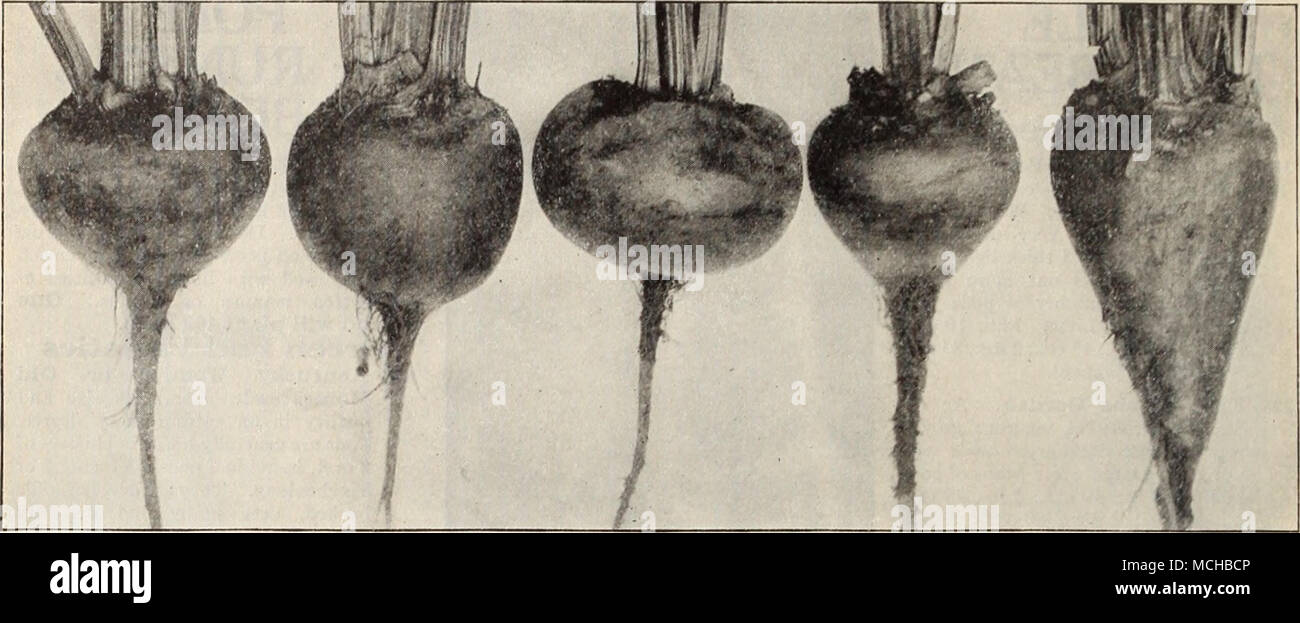. Dreer's Special Crosby's Egyptian Detroit Dark Red Betterave, Fr. Extra Early Egyptian BEETS Crosby's Egyptian Remolacha, Sp. Rube, Ger. Bastian's Half-long Blood One ounce will sow 50 feet of drill; 6 lbs. for an acre. One of the earliest vegetables the garden yields and one of the first to be sown or planted into the garden. For an extra early supply, sow seeds in a hotbed or cold frame by middle of March. Be sure to press the soil in firm contact with the seeds to insure prompt and even germination. By middle of April, plants will be 4 inches tall, when they should be set out in the garde

Image details
Contributor:
The Bookworm Collection / Alamy Stock PhotoImage ID:
MCHBCPFile size:
14.3 MB (577.7 KB Compressed download)Releases:
Model - no | Property - noDo I need a release?Dimensions:
3490 x 1432 px | 29.5 x 12.1 cm | 11.6 x 4.8 inches | 300dpiMore information:
This image is a public domain image, which means either that copyright has expired in the image or the copyright holder has waived their copyright. Alamy charges you a fee for access to the high resolution copy of the image.
This image could have imperfections as it’s either historical or reportage.
. Dreer's Special Crosby's Egyptian Detroit Dark Red Betterave, Fr. Extra Early Egyptian BEETS Crosby's Egyptian Remolacha, Sp. Rube, Ger. Bastian's Half-long Blood One ounce will sow 50 feet of drill; 6 lbs. for an acre. One of the earliest vegetables the garden yields and one of the first to be sown or planted into the garden. For an extra early supply, sow seeds in a hotbed or cold frame by middle of March. Be sure to press the soil in firm contact with the seeds to insure prompt and even germination. By middle of April, plants will be 4 inches tall, when they should be set out in the garden in rows 18 inches apart, with the seedlings four inches apart in the row. For a continuous supply throughout the season, make the first sowing outdoors along middle of April and again ev ery two weeks up to August 1st. To be most palatable, Beets should be eaten while quite young, when the bulbs average two inches in diameter, no more. To secure a good start outdoors, the gardener should always walk over the rows after the seeds are sown. To secure a uniformly well shaped product, seedlings should be thinned out to stand 3 to 4 inches apart in the row. Those that are pulled up will make good greens or may be transplanted into other rows. 140 Bastian's Half-long Blood. An excellent variety par- ticularly for fall or winter use. The roots are smooth, flesh bright red and the quality is very good. It is a splendid keeper, and for winter use the seed should be sown early in July. Pkt., 10 cts.; oz., 20 cts.; i lb., 45 cts.; lb., $1.25. 142 Crimson Globe. This Beet is remarkable for its smooth skin and good shape. It is a second early variety, does not grow large and coarse, the matured Beets being medium in size and rather oblong in shape. The flesh and skin are both very dark and quality fine, being sweet and tender. We are confident that this Beet will please all who plant it. Pkt., 10 cts.; oz., 20 cts.; £ lb., 50 cts.; lb., $1.50. 144 Crosby's Egyptian. Slightly later than t